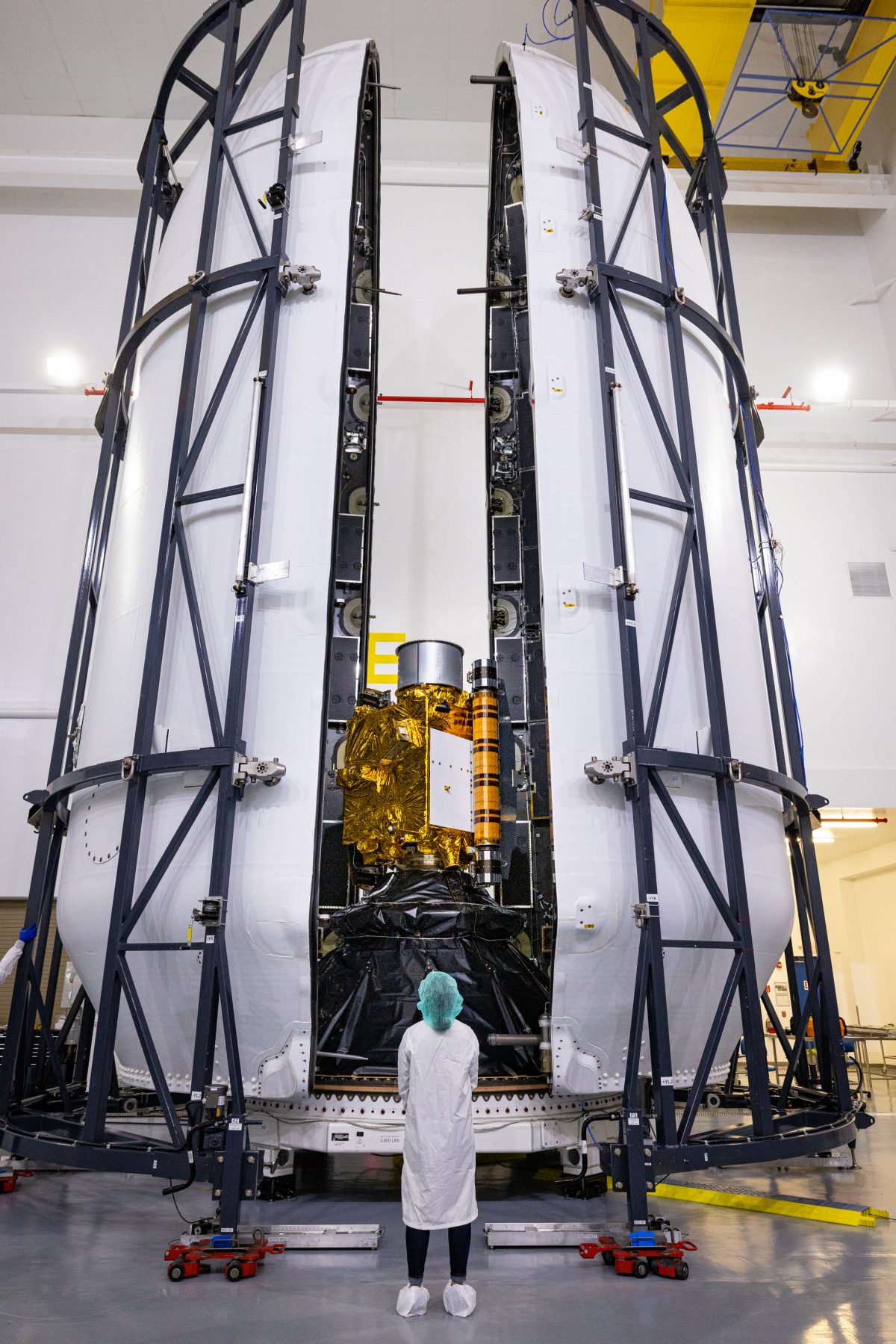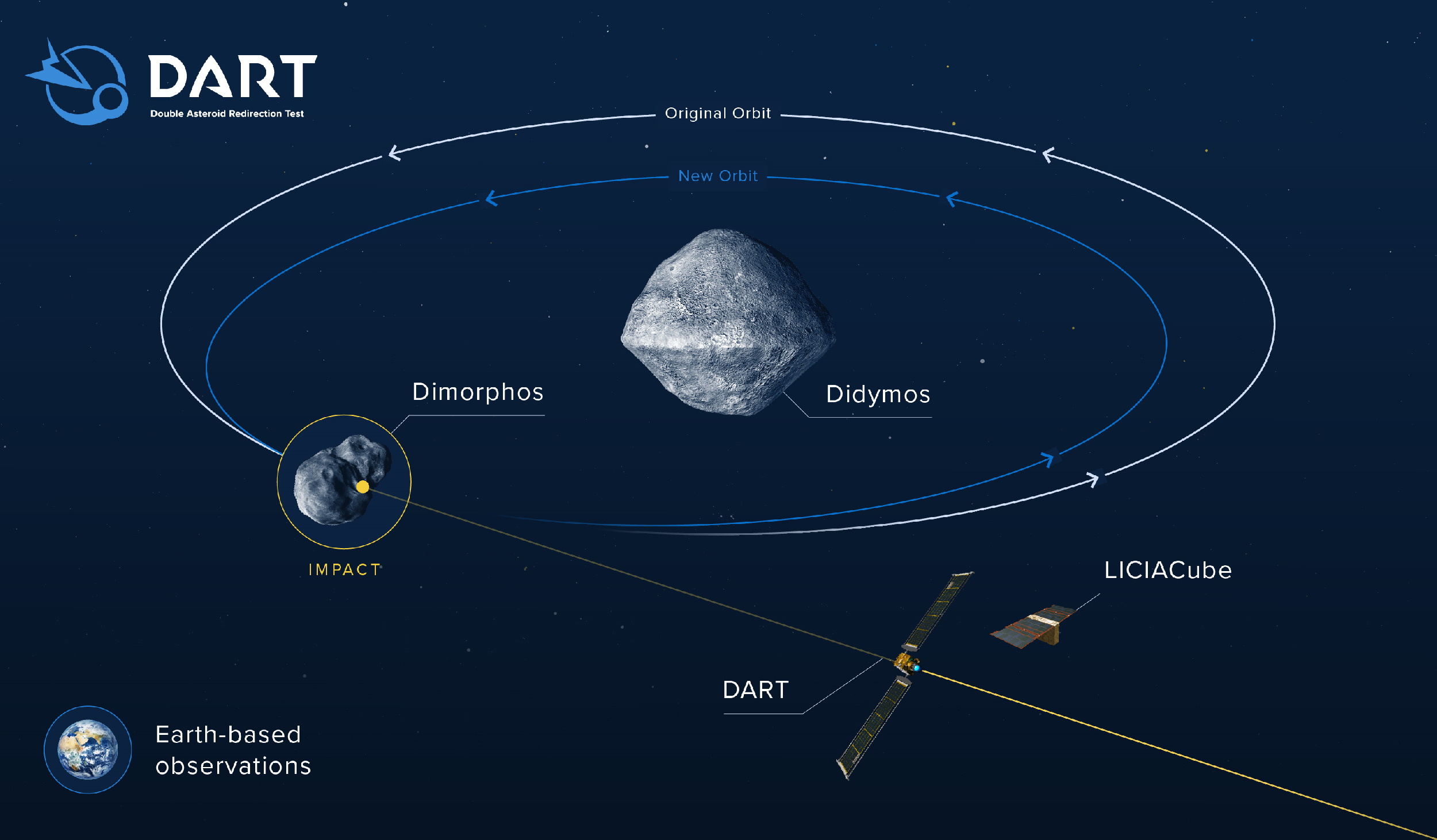One of NASA’s most exciting and unusual missions in years, the Double Asteroid Redirection Test (DART), is scheduled to launch tonight on its way to strike and deflect an incoming space rock millions of miles from Earth. You can watch it live here, though it’ll be some time before the big smash happens.
DART is our first attempt as a spacefaring species to deliberately change the path of an oncoming asteroid. Rest assured this one in particular is no danger to our precious planet, but does happen to be a perfect test bed for the type of interception that might be necessary should such a danger appear.
“Planetary Defense has been working on the problem for, really, decades,” explained Thomas Zurbuchen, head of NASA’s Science Mission Directorate. “It’s time to start getting together this toolset — it’s getting important for all our stakeholders. It’s really been in the last five years or so that the program has increased its support. And the target has been around for at least five years before that — people were talking about how this is really perfect, we can view its success from the ground, there’s no need for a second investigation.”
The asteroid in question is actually the smaller of two in a binary configuration, traveling like a married couple through the solar system. The larger asteroid, Didymos, is about half a mile wide — not quite a planet-killer, but you wouldn’t want it coming down in your neighborhood either. And around it orbits our target: Dimorphos, about 525 feet across and sort of peanut-shaped, it’s about the size the Statue of Liberty would go bouldering on.
What DART will do is fly right out there and, just when Dimorphos is coming around from the far side of Didymos, smash into it as hard as possible — and that’s quite hard, considering that the spacecraft will weigh about 1,210 pounds and its new ion engine will have propelled it to the eye-watering (if it had eyes, and there was air) speed of 4.1 miles per second. (That’s 550 kilograms at 6.6 km/s for our metric friends; I leave it to the boffins to calculate the approximate impact force.)
Dimorphos won’t explode and send fragments flying everywhere. Quite the opposite: the effect will be barely noticeable. But the impact will ever so slightly affect the period of its orbit around Didymos, slowing and expanding it to the point where a powerful telescope can perceive it. By observing this change scientists should be able to tell the mass of the object and how effective this refined technique of hitting a heavy thing with another thing actually was.

DART in its protective fairing before being loaded onto the rocket. Image Credits: NASA/Johns Hopkins APL/Ed Whitman
Once they know that, they can make an informed decision on what might be necessary if, for instance, an asteroid twice as large was in fact on a collision course. By applying this much force at this angle, at this time and distance (as far out as possible, one member of the team told me), we can divert it just enough that it won’t hit us. DART will be foundational to this sort of planetary defense work. Hopefully we won’t ever need it, but we can all agree it’s better to be prepared than have to muster a ragtag group of oil rig roughnecks to nuke the Big One at the last minute. That’s another “Armageddon” reference to keep our valued older readership engaged.
“What we’d really like to do with this is, we need to know how to size an impactor depending on the size of the threat coming in. We want an impactor model with a high degree of accuracy,” said Zurbuchen. One such mission may not be enough, and though there are no plans for another impact mission yet, “I could easily imagine that a follow-up test into a different asteroid type could be on the books.”
Of course though the impact may be relatively small, it will still be cool. So we’re sending up a partner spacecraft, LICIACube, that will watch from nearby, providing both data and crowd-pleasing footage of our attack on space mountain. Chances are it will just look like a puff of dust, gravel, and solar panel parts, but you never know. This might be the asteroid with something living in it. If so, it will still about 6.8 million miles away, so we won’t be in immediate danger. At any rate it’s hard to imagine ramming an asteroid with a spacecraft and not getting it on camera.
“It’s a high risk, high impact investigation,” Zurbuchen said of the companion cubesat, which will have to be perfectly positioned and watching closely at the time of impact. “We can be sure it worked without it, but… I want to see that movie, man.”
The launch window for DART, aboard its SpaceX Falcon 9 vehicle, begins tonight at about 10:20 PM Pacific, and the weather at Vandenberg Space Force Base is looking 90 percent favorable in the latest reports. Once it’s out there it will be nearly a year before the spacecraft makes its destructive rendezvous with Dimorphos: impact is estimated to take place at the end of September 2022, though we’ll only know the exact time once the variables are locked down.
Pre-launch coverage will be happening all day on NASA Live, but tune in at about 7 PM for the real run-up and countdown to launch. You can watch below or at any of the links provided here.


